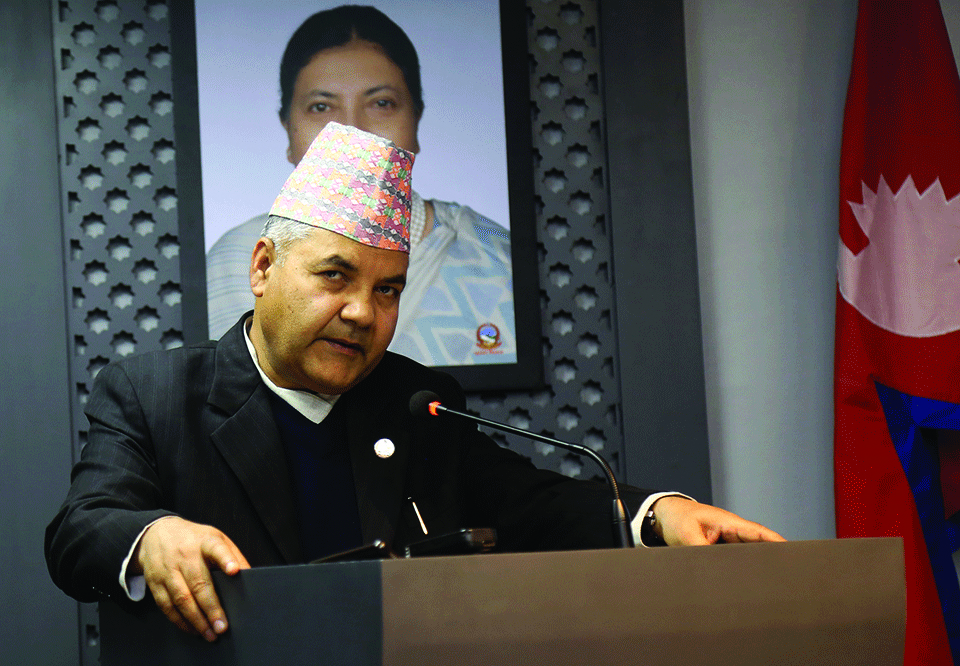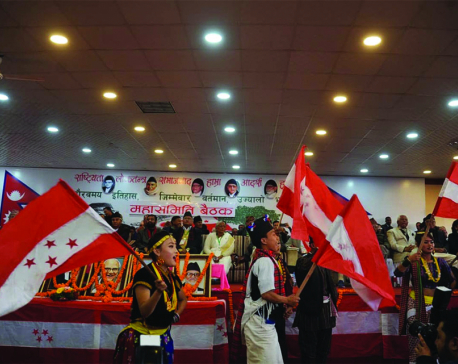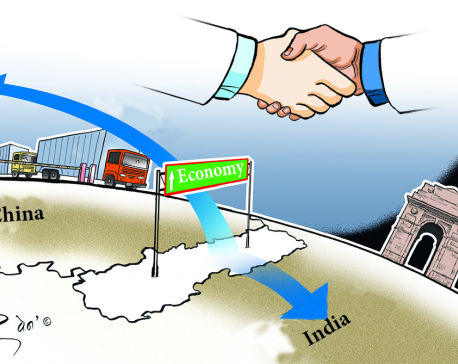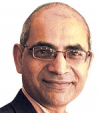
OR
MEDIA SUTRA

Drop the draft bill, don’t even consider revising it. Rather, force the media community to form their own independent press standards mechanism. Let them call it whatever name they choose
The fallout between the journalism community and the government over the draft Media Council (MC) bill has led to a shouting match, which shows no sign of subsiding, not as yet. The leaked document, with its provisions on government oversight of the proposed Council and even outright interventions in its affairs, blatantly reneges on “complete” press freedom, a unique provision in the nation’s constitution promulgated not that long ago.
The journalism community is visibly shocked at the way the government has rushed the bill, without adequate stakeholder inputs, to the parliament. The document emboldens a government ministry official to hire and fire council members on whim. It vests MC with adjudicatory powers (birthing a new courtroom) to fine a journalist (or a newsroom) up to one million rupees for the violation of the code of ethics. Press Council Nepal (PCN), which the MC seeks to replace, at least has been quasi-governmental, bird-and-beast, with its history of partisan leadership appointments. MC, as envisioned in the document, will be a beast, all in all.
Gokul Baskota, the government minister responsible for the press, doesn’t seem to have capitulated on the proposed provisions of the bill, which, he insists, will help “protect the liberty of citizens” against the “wayward press”.
Two steps back
This is an unfolding tragicomedy of one-step-forward-and-two-steps-back in Nepal’s torturous reforms experiment. Meanwhile, mixing the silly with the serious, some journalists have staged a symbolic “cry-out” protest asking the government to withdraw the bill. They have mixed their tearless wails, with some mischievous grins, on camera.
Can we dismiss this as an isolated case of the government going overboard? Do we see here a persistent pattern of press freedom violations by this majority government? Is it intent on systematically muzzling the adversarial press?
Certainly, increased instances of breaches in journalistic ethics such as media bias, inaccuracies and unfairness in coverage, invasion of privacy, defamation, hate speech, etc, and more importantly, a weak self-regulation environment, embolden the government case for stricter oversight measures.
And, to be sure, Nepal is no exception to the global epidemic in online and social-media disinformation. It has become routine for political leaders to decry “fake news” or doctored images going viral. Countries like Australia, Singapore, Russia, UK and many others are considering new bills to curb tech-induced disinformation. Journalism is increasingly, and often unfairly, seen as complicit in online misinformation campaigns because press freedom, in all its subtleties, helps amplify free expression, across platforms.
For now, we may give a benefit of doubt to the government and consider the passage of the draft bill simply as an example of a bureaucratic expediency trumping the policy deliberation process in our democracy. After all, never before has our government been so immersed in the task of literally producing hundreds of bills and legislations within months, under the new constitution.
The marketplace of ideas remains merely an idea. The government continues to own and operate a number of national news outlets, including print, broadcast and online. How will the government-controlled Media Council balance its official concerns with the ethical needs of independent journalism in the private sector?
Predictably, the media fraternity has been vehemently opposed to the bill. Protesting (unionized) journalists, editors, commentators and publishers’ groups have asked the government to withdraw the bill and revise it for it to be acceptable. The government’s consultations remain largely confined to its party-affiliated journalists’ groups.
I am surprised—and not surprised—that this delayed and reluctant dialogue does not include other stakeholders beside the government and journalists, such as media users from the general public, media bosses or experts in various walks of life. The lay users are critical components of the media equation today. It is important to include them in the consultations and to properly channel and incorporate their concerns. Deliberation, however, tests our patience. It is a time-consuming, resource-intensive, strenuous and a messy process.
Explore options
Stakeholders should take their own initiative to explore options in promoting responsible and ethical journalism: code of ethics, press criticism and monitoring, or fact-checking, or creating complaints commission, press councils, and ombudsman, etc. Our social media offer examples of educational efforts on some of these domains. In the US, the independent media watchdog tradition is so strong and vibrant that professionals never saw a serious need for a media council.
I think that we in Nepal do require a strong institutional mechanism for ethical enforcement and compliance. Our media are still in the formative stage, in the learning phase and subject to adolescent behaviors, marked by naivety and innovation, mischief and creative energy. Yet, with the correct policy choice and its adoption, we can hasten change. We already figure prominently today in the region, for instance, in our impassioned exercise of press freedom and in the community media sector.
Here is another opportunity to show some leadership, this time in self-regulation. Drop the draft bill, don’t even consider revising it. Rather, force the media community to form their own independent press standards mechanism—let them call it whatever name they choose.
Yes, force them.
Scandinavian lessons
We only have to look at the Scandinavian countries, whose press systems are self-regulated. Sweden, Finland, Norway and Denmark rank among the highest in the world for press freedom and in their practice of participatory democracy. They have the highest news readership in the world and maintain good media literacy skills.
The origins of self-regulation measures in Norway can be traced to a government-media tussle over press accountability. In the 1990s, the government there took a carrot-and-stick approach. It openly threatened the media with harsher ethics legislation, if they did not initiate and embrace reform for quality journalism. The media community worked together and introduced sweeping reforms. The Norwegian Press Complaints Commission was revamped into a voluntary-based oversight body, fully independent of government control, with members representing not just the media sector but also public life as well as consumer communities. It is run entirely on annual membership dues.
Many countries, such as Australia, Ireland and Canada have scandinavianized their oversight systems, by adopting the independent self-regulation model. A somewhat of a mixed ethical system may be the answer for Nepal. At the moment, the country’s media system is too fractured and polarized for it to collectively take up the challenge of wholesale self-regulation. In the initial stage, government mediation or facilitation is not only necessary but also inevitable.
Sometimes a tussle is a harbinger of change. Can the government’s draft bill ignite us into reflection and action, beyond shock and uproar?
Journalists, media leaders, critics, users and members of the public, do we have in us what it takes to take that first step, independent of government control, toward self-regulation in Nepali media?
Eventually, it must be done. So, why not start now, one step at a time?
The author is currently an associate professor of Journalism at Shantou University, China
You May Like This

Free the press
Should the draft bill with provisions of harsh penalties and prison terms be passed, it will discourage professional journalism, while... Read More...

Path of peril
Even though politics of here and now demands repositioning of Nepali Congress, playing to the religious gallery might prove to... Read More...

Tap the opportunities
Low level of economic integration combined with untenable trade deficit is making Nepal vulnerable to external shocks ... Read More...




Just In
- Govt receives 1,658 proposals for startup loans; Minimum of 50 points required for eligibility
- Unified Socialist leader Sodari appointed Sudurpaschim CM
- One Nepali dies in UAE flood
- Madhesh Province CM Yadav expands cabinet
- 12-hour OPD service at Damauli Hospital from Thursday
- Lawmaker Dr Sharma provides Rs 2 million to children's hospital
- BFIs' lending to private sector increases by only 4.3 percent to Rs 5.087 trillion in first eight months of current FY
- NEPSE nosedives 19.56 points; daily turnover falls to Rs 2.09 billion
















Leave A Comment